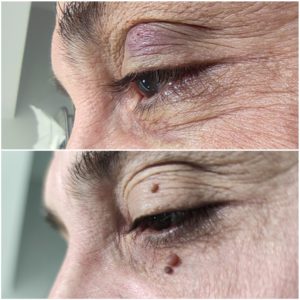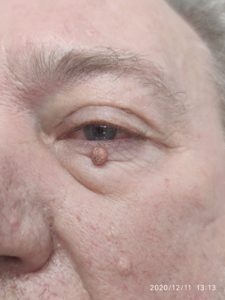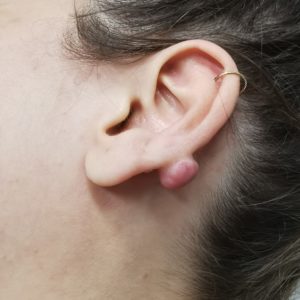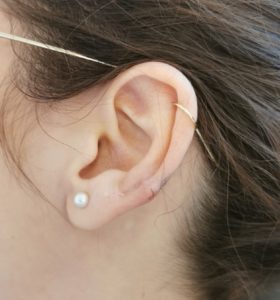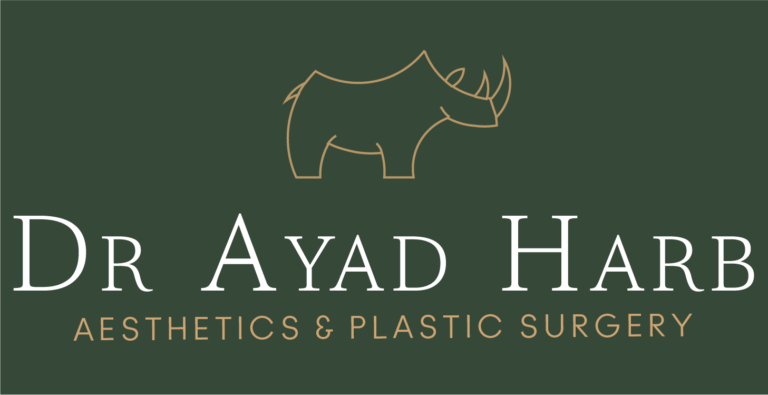Excision of a mole, cyst, tag, cancer or any “lump or bump’ on the skin
What are the most common lumps and bumps found on the skin?
“Lumps and bumps” is a generic term used to describe the multitude of growths and lesions that can appear on or in the skin. The commonest lumps and bumps are moles, cysts and skin tags. Other lesions that may develop under the skin include lipomas, which are fatty growths.
Is it safe to remove lumps and bumps on the skin?
Most lesions such as benign moles, cysts and skin tags are simple and safe to remove. It is important that these are checked by your doctor or a dermatologist first to make sure that no testing is necessary and that there aren’t any suspicious features that may require further testing.
Does mole removal leave a scar?
Skin lesions and moles can be removed using various techniques, such as shaving or surgical excision, depending on their type and size. If shaving is suitable then this is likely to leave minimal scarring if any. Surgical excision is necessary for lager lesions or ones that have deeper roots in the skin. Surgical excision will leave a small scar, but this should also be fairly discrete. Dr Ayad is a cosmetic plastic surgeon and is skilled at accurate scar placement and precise suturing techniques that will leave the finest and most discrete scar.
Is it safe to remove skin cancers?
It is important to distinguish regular lesions from skin cancers. skin cancers require specialist diagnosis and treatment. Dr Ayad is a trained plastic surgeon with extensive experience in treating skin and soft tissue cancers. Dr Ayad will be able to advise you regarding the suitability of a skin cancer removal. We also have Dr Zainab Laftah, consultant dermatologist, who is an expert in diagnosing and treating skin cancers. Skin cancers such as SCC and melanoma, should only be managed in specialist centres.
Procedure details
Usually this surgery is carried out under local anaesthesia (while you are awake after the skin has been numbed). Sometimes, if more extensive or in a very tricky location, the surgery is done under general anaesthesia (while you are asleep). The procedure usually takes between 20 and 60 minutes depending on the extent of surgery. More than one lesion can be removed at the same time.
The skin lesion is removed and usually the area is stitched together carefully. If indicated, the lesion will be sent away for histological analysis.
For benign moles, the best cosmetic result may be achieved by simply shaving the mole off level with the surface of the skin, and allowing it to heal over without any stitches.
Large lipomas or fatty areas, such as ‘buffalo humps’ are sometimes suitable for removal by liposuction.
What happens after removal of a skin lump or bump?
Usually the area is dressed with a plaster or bandage, which are splash resistant but should not be submerged in water. You may shower the day after surgery and gently dab the tapes dry. You may use a hairdryer on a cool setting to speed up drying of the tapes before dressing. Dr Ayad prefers to use absorbable sutures whenever possible, which are buried and dissolve under the skin, so that they do not need to be removed. However, sometimes, it is necessary to use exposed sutures in the skin. In the face, stitches will need to be removed between 5 and 7 days following surgery. When possible elsewhere on the body, they will need to be removed between 10 and 14 days following surgery. It is usual to have some swelling and bruising in the area in the early stages.
What is the aftercare following skin surgery?
It is usually possible to return to light activities the next day but strenuous activities will need to be avoided for about 2 weeks. If the procedure was on your head and neck area, it is best to avoid bending and stooping as much as possible for the first few days and to sleep on an extra pillow at night. If the skin lesion was on your arm or leg, it is best to try to elevate the limb as much as possible for the first few days. These measures help to minimise bleeding and swelling after surgery. The area is usually healed in 2 to 3 weeks but the scar will continue to strengthen and then to soften and fade for 12 to 18 months afterwards. Most of the changes in the scar occur in the first 6 weeks but it continues to slowly change after that.
How to minimise scarring after skin surgery?
Once healed, Dr Ayad usually advises moisturisation and massage of the scar with a Vitamin E or a plain moisturiser 2 to 3 times daily for around 3 months. You should also keep the area protected from sun exposure or rubbin and mechanical trauma to allow it to heal and settle in the quickest and best way possible. If your scar shows any signs of being raised or lumpy or slow to settle, it may be suitable to use silicone ointment or sheets on the scar or further scar treatments.
